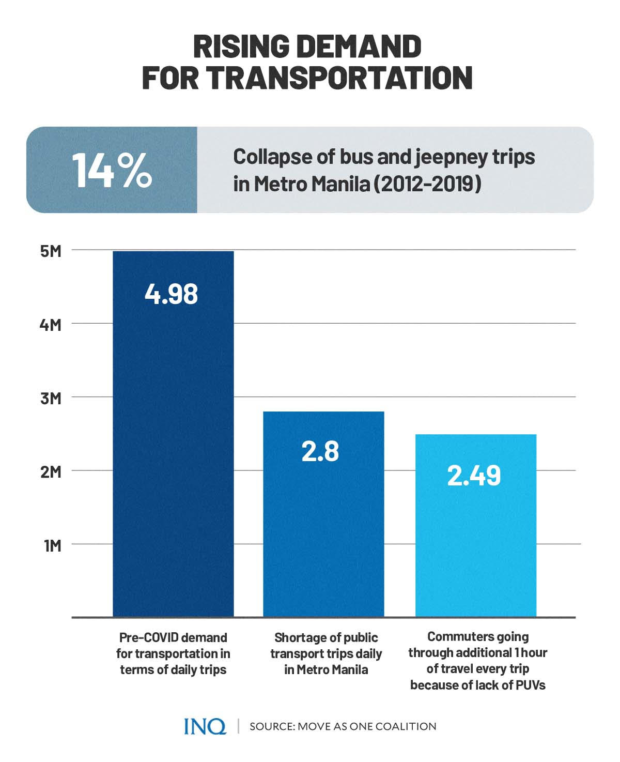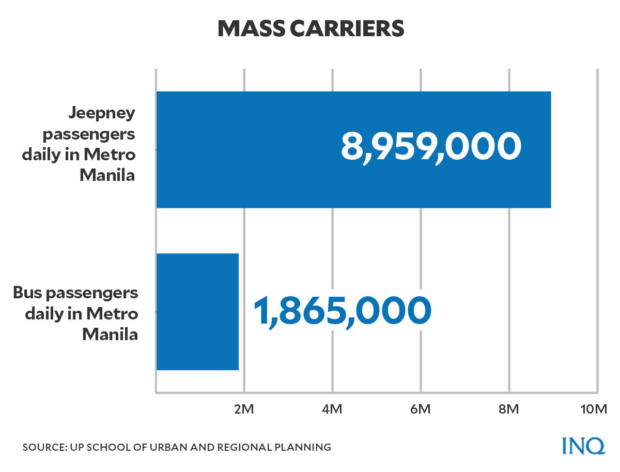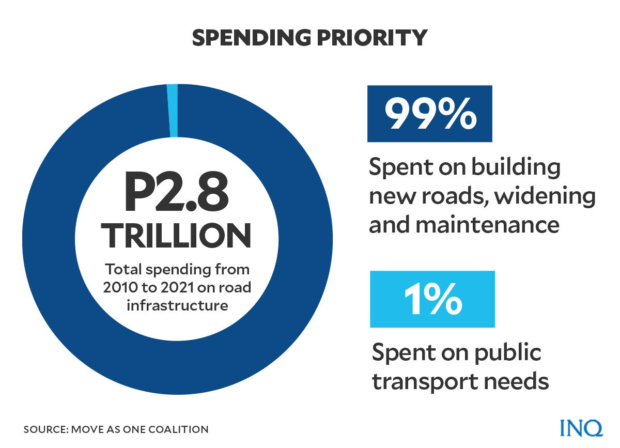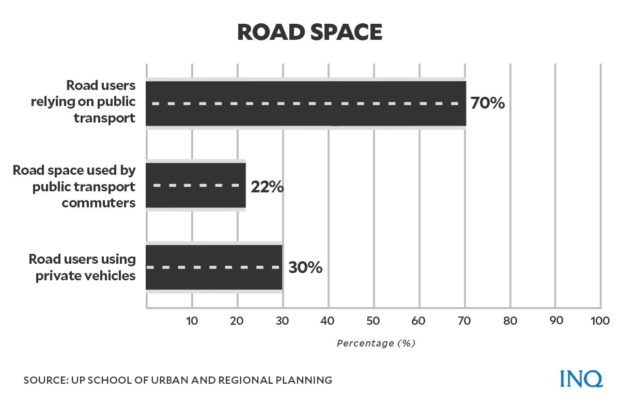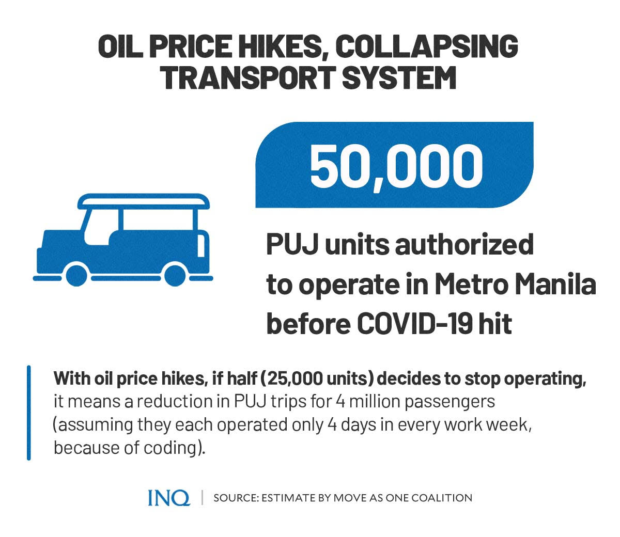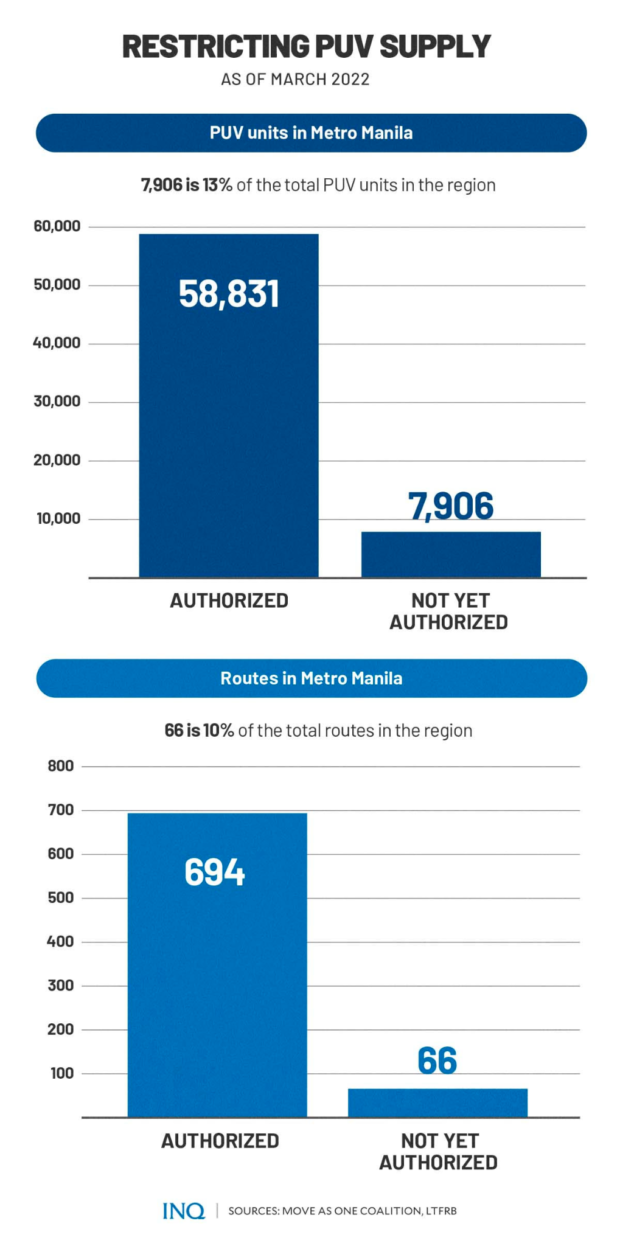PH transport crisis: Complex problem requiring comprehensive solutions
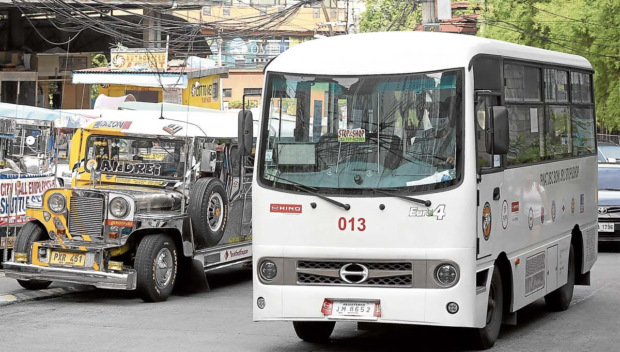
FILE PHOTO: Traditional and modern jeepneys share space on Pinatubo Street in Mandaluyong City. —NIÑO JESUS ORBETA
MANILA, Philippines—It was President Rodrigo Duterte himself who said that there is a critical problem that Filipinos confront every day—the transportation crisis, especially in Metro Manila.
Back in 2016, he promised to address this and even considered asking Congress for emergency powers, saying that the government cannot end the crisis without resources.
While Duterte was not given special powers, he had the six-year Build, Build, Build (BBB) program, which cost P8 trillion. It consists of 119 flagship infrastructure projects all over the Philippines.
With the BBB, the Department of Public Works and Highways (DPWH) said, Filipinos can now expect “carmageddon” in Metro Manila to ease every year, saying that “it is really our goal by the end of the President’s term”.
READ: Targets missed in Duterte’s ‘Build, Build, Build’: What’s next?
It was in 2019 when the National Economic Development Authority (NEDA) said that the completion of BBB projects will significantly lessen the transportation cost in Metro Manila—from P3.5 billion every day in 2017 to P2.13 billion in 2022.
This, as the Japan International Coordinating Agency (Jica) stressed in its Metro Manila Transport Roadmap that transportation cost—the vehicle operating cost spent by drivers and passengers—hit the P3.5 billion mark in 2017 because of traffic congestion.
When the COVID-19 crisis hit in 2020, the Philippines saw its highways cleared from congestion. This, however, was because of the lockdowns imposed by the government to mitigate the spread of the disease.
RELATED STORY: 2-year COVID pause brings public transport change, but new normal looks old
While Metro Manila’s traffic congestion level eased through the years, as revealed by TomTom International B.V.—71 percent in 2019, 53 percent in 2020, 43 percent in 2021—the transportation sector is now in a “deadly spiral”.
The Move As One Coalition (Move As One) said the cost of oil is rising, drivers are losing incomes, the supply of public transportation is collapsing, commuters are experiencing longer waiting lines, and even crowded commutes.
READ: Suffering commuters, higher fare, fewer trips: PH transport woes pile up
What’s not working?
NEDA said last year that the government was expected to complete 18 flagship infrastructure projects worth P235.9 billion on its BBB list by the time the President steps down from Malacañang on June 30.
READ: Neda: 18 of 112 Build, Build, Build projects done by time Duterte gone
However, experts said in 2020 that travel through public transportation will be worse than ever, saying that because of the lack of public utility vehicles (PUVs) and traffic congestion, a 10-minute to an hour more travel time is possible.
This, as the Move As One stressed that the immediate needs of millions of Filipinos who do not own cars are not being met. The University of the Philippines’ (UP) School of Urban and Regional Planning said there are millions of passengers in Metro Manila:
• Jeep passengers (daily): 8,959,000
• Bus passengers (daily): 1,865,000
The coalition said traffic congestion is still rife because over the past decade, 99 percent of the P2.8 trillion worth of road-based programs went to road constructions and widening, while only one percent was invested in improving public transportation.
READ: Sensible public transport: A post-pandemic dream
This, even if PUV-only lanes enable roads to carry 29 times more people: “We find that the national government has given too much on roads and not enough on the people […] who use our roads as public spaces.”
It said the government’s car-centric approach to infrastructure development “has had a deleterious effect on urban mobility”, stressing that PUV trips in Metro Manila collapsed by 14 percent from 2012 to 2019.
Benjamin De La Peña, chief executive officer of the Shared-Use Mobility Center, previously told INQUIRER.net that the government should “invest in public transportation,” stressing that there should be a concrete plan on how to address the crisis.
He said that if the government does not aspire to make public transportation efficient, completing BBB projects will not make a difference in people’s lives, especially in the way people go to work.
The UP School of Urban and Regional Planning revealed that 70 percent of people rely on public transportation, but they only take up 22 percent of road space. Only 30 percent rely on private vehicles.
For Move As One, the government should invest in more immediate mobility demands by prioritizing road-based public transportation. It said that as more people shifted to private vehicle trips, average vehicle travel times increased.
The problem, however, is that 98 percent of the P2 trillion project pipeline is for long-term rail projects and only two percent is for road-based public transportation, the coalition said.
BBB ‘not the only way out’
It stressed that “we need to learn from the past decade’s mistakes and work together to get out of this,” saying that the government cannot merely Build, Build, Build its way out of the crisis.
Move As One proposed that the government fill a P150 billion investment gap for road-based public transportation in the next budget cycle, saying that while it is smaller than P2.8 trillion, it is “more effective”.
“We need a better balance for a better normal,” the coalition said, explaining that there’s a need to “move towards a public transport that is safer, more human and more inclusive”.
It said that there are available revenues to finance better public transport, especially because the government collected almost P2.1 trillion in road-based transport revenues from 1997 to 2018.
Presenting a 10-point agenda to fight transport inflation, it said the only sustainable way to address the increase in transportation costs and ease pressure on fare hikes is for the government to “wean our economy’s dependence on oil”.
The shift to road-based public transportation, cycling and walkways will “address the massive shortage in transportation supply that was made worse by the COVID-19 crisis.”
Based on results of a survey by the Social Weather Stations, 87 percent of Filipinos believe that roads “will be better off if public transportation, bicycles, and pedestrians are given priority over private vehicles”.
Brink of collapse
By 2030, Move As One said, the “transport supply shortage” in Metro Manila will be as high as 2.8 million daily passenger trips even if the BBB program was completed “on time.”
The coalition, which calls for sustainable mobility, explained that it was because only two percent of the P2 trillion program pipeline was dedicated to “road-based public transport investments.”
The problem does not end here, though, especially with the still existing threats of COVID-19 and the consecutive oil price hikes which, last week, saw the cost of every liter of diesel increase by P4.30; gasoline (P2.15); kerosene (P4.85).
READ: Another big-time oil price hike set from June 14
Because of this, Move As One estimated that if half of the 50,000 PUJ units that were on Metro Manila roads before the COVID-19 crisis hit, there will be a decrease in PUJ trips for four million passengers.
This is on top of the thousands of PUV units still not authorized to operate in Metro Manila by the Land Transportation Franchising and Regulatory Board (LTFRB) since 2020.
The coalition, citing data from the LTFRB, said that as of March 2022, 13 percent of PUVs—7,906 units—and 10 percent of routes—66 routes—are not authorized in Metro Manila since the government suspended public transportation two years back.
The Department of Transportation earlier said there are 1,514 open routes and 118,238 PUVs in Metro Manila. It said that by March 15, there will be more—71 routes and 8,729 PUVs.
Last April, the LTFRB announced that it will reopen PUV routes near Commonwealth Avenue in Quezon City after receiving reports of shortage in public transportation supply.
The LTFRB said there will be six more routes with 158 modern PUJs, 76 routes with 4,135 traditional PUJs, and one route with 19 units of modern UV Express and two routes with 2,783 traditional UV Express.
Move As One stressed that with the public transportation system on the brink of collapse, the legalization of motorcycle taxis would have released additional public transportation supply at a time when there is a large deficit.
However, the 18th Congress ended without a law legalizing motorcycle taxis since the counterpart version of House Bill No. 10571 in the upper chamber, Senate Bill No. 1341, came to a standstill.
READ: Missed chance to bridge transport gap: Goodbye 18th Congress, MC taxi law
TSB
